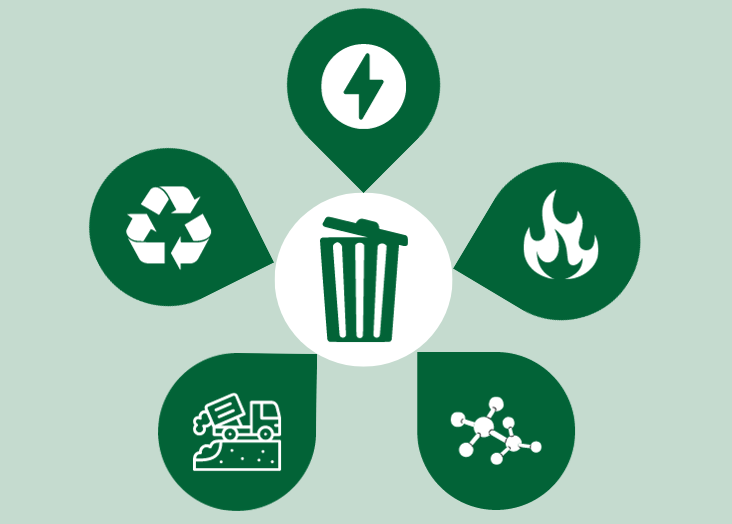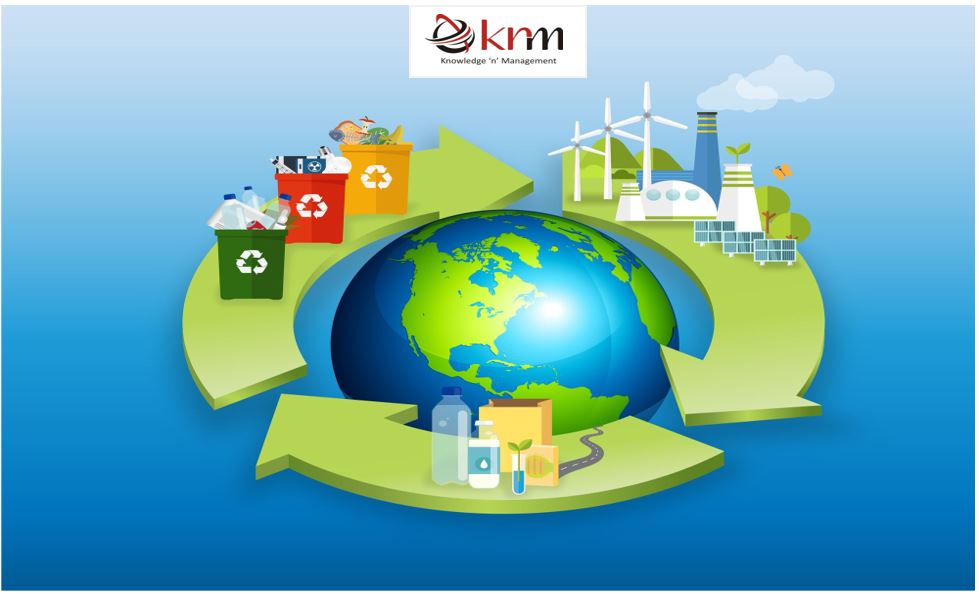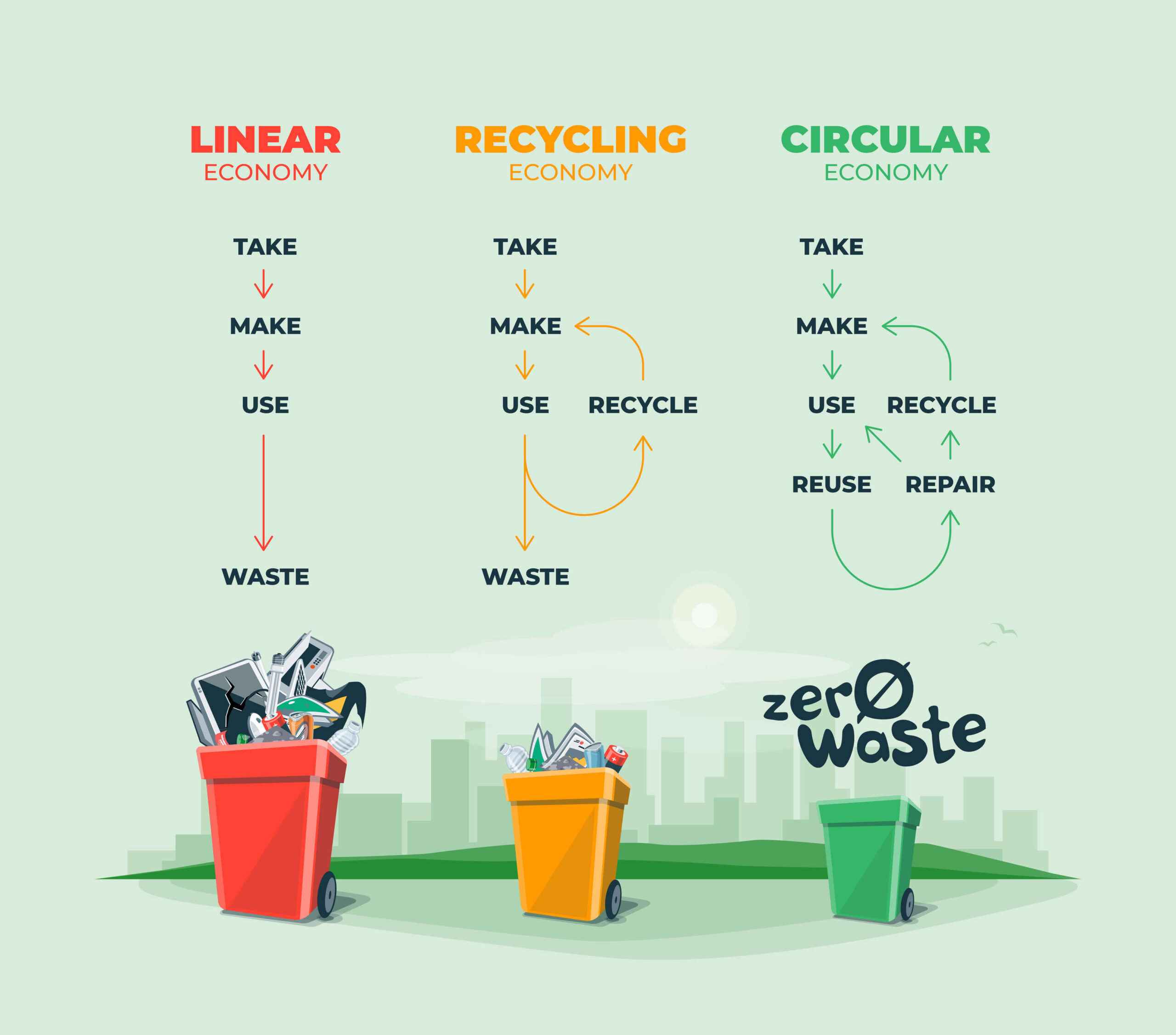Recycling Lives Services: A Full Solution for Business Recycling
Recycling Lives Services: A Full Solution for Business Recycling
Blog Article
Exploring Different Kinds Of Waste in Modern Waste Monitoring Systems
The contemporary landscape of waste monitoring involves browsing a complex variety of waste kinds, each calling for specialized handling and disposal approaches to mitigate environmental influences. Municipal solid waste, harmful waste, digital waste, and natural waste each existing distinctive challenges and opportunities for source recovery. Ingenious options such as clever waste bins and waste-to-energy innovations are arising as crucial tools in enhancing efficiency and sustainability. Recognizing these waste kinds is necessary for cultivating public understanding and motivating energetic engagement in lasting methods. What techniques can properly resolve these diverse kinds of waste while promoting a circular economy?
Local Solid Waste
Municipal solid waste, commonly referred to as household trash or waste, includes a selection of disposed of materials created by residential, business, and institutional resources within a district. This waste stream usually includes things such as packaging, food scraps, backyard trimmings, paper, plastics, fabrics, and thrown out household products. The monitoring of municipal strong waste is a vital component of metropolitan planning and public wellness, requiring reliable collection, transportation, and disposal systems.
Effective waste monitoring systems are created to minimize ecological influence while making best use of source healing. This usually includes a mix of approaches consisting of landfilling, recycling, and composting. Recycling programs target materials like paper, glass, steels, and specific plastics, diverting them from garbage dumps and reestablishing them right into the manufacturing cycle. Composting organic waste, such as food scraps and yard trimmings, not only lowers land fill use but likewise generates valuable soil changes.
Municipalities need to also deal with the economic and logistical challenges connected with waste monitoring. Applying pay-as-you-throw systems, boosting public understanding, and investing in technology can dramatically boost waste diversion prices. By incorporating these techniques, districts can cultivate lasting neighborhoods, minimize greenhouse gas exhausts, and save natural resources.
Hazardous Waste

Reliable contaminated materials management includes numerous crucial actions: identification, disposal, therapy, and partition. Identification requires the classification of waste based on its harmful residential or commercial properties. Partition guarantees that harmful products are saved separately from non-hazardous waste to stop cross-contamination. Treatment techniques, such as chemical neutralization, incineration, and stablizing, are used to lower the poisoning, volume, or movement of the waste. Disposal options, including safe land fills and below ground storage space, are picked to make sure lasting control.
Regulative structures, such as the Source Preservation and Recuperation Act (RCRA) in the United States, offer guidelines and criteria for harmful waste administration. Adherence to these regulations, paired with advancements in waste therapy innovations, is important in minimizing the dangers linked with contaminated materials.
Electronic Waste
Electronic waste, typically referred to as e-waste, represents a swiftly growing challenge in waste administration systems internationally. This kind of waste incorporates disposed of electronic tools and tools such as smartphones, computer systems, televisions, and various other electronic appliances. The rapid speed of technological innovation, coupled with lowering product lifespans and customer demand for the most current gadgets, has actually tremendously enhanced the quantity of e-waste generated each year.
E-waste is especially bothersome due to its intricate composition, often having dangerous compounds like cadmium, mercury, and lead, which present significant ecological and wellness risks if YOURURL.com not appropriately taken care of. On the other hand, e-waste additionally contains important products such as silver, copper, and gold, which can be recovered and recycled. The double nature of e-waste-- both valuable and unsafe-- demands specific handling, reusing, and disposal procedures.
Efficient e-waste management involves strict regulative frameworks, robust collection systems, and progressed reusing modern technologies. Public awareness and participation are essential, as incorrect disposal techniques, such as prohibited dumping and informal recycling, exacerbate environmental contamination and health and wellness risks. As a result, improving e-waste administration methods is crucial for minimizing eco-friendly influence and recuperating you can try these out useful sources in an increasingly digital world.

Organic Waste
Organic waste, comprising cooking area scraps, backyard trimmings, and farming residues, stands for a considerable part of the global waste stream. This kind of waste is eco-friendly, implying it can be broken down by microbes into easier natural substances. Despite its possibility for all-natural disintegration, inappropriate management of natural waste can lead to unfavorable environmental effects, including the emission of greenhouse gases such as methane, which add to climate adjustment.
Reliable monitoring of natural waste is critical for decreasing these environmental effects (recycling lives services). Composting is a commonly adopted method, changing organic waste into nutrient-rich garden compost that can improve dirt health and agricultural productivity. Furthermore, anaerobic food digestion is an arising innovation that converts organic waste into biogas, a renewable resource resource, and digestate, which can be utilized as fertilizer
Municipalities and waste management entities have to apply durable natural waste collection and therapy programs to optimize the advantages of these procedures. Public education and learning campaigns can additionally play a crucial duty in encouraging homes and services to different organic waste from other kinds of waste. By prioritizing the monitoring of organic waste, societies can minimize landfill usage, lower greenhouse gas discharges, and create valuable by-products for agricultural use.

Cutting-edge Waste Administration
In the world of waste management, cutting-edge methodologies are transforming how cultures handle their refuse, intending for sustainability and efficiency. One prominent development is the execution of smart waste containers geared up with sensors that monitor fill degrees and enhance collection courses.
Another notable development is the fostering of waste-to-energy (WtE) modern technologies. By transforming non-recyclable waste right into functional energy via procedures such as incineration and anaerobic digestion, WtE lowers garbage dump problem and offers a sustainable power resource. In addition, advancements in chemical recycling enable the failure of complicated plastics into their initial monomers, allowing the production of brand-new, top notch plastic products.
Additionally, the circular economy version is gaining traction, stressing the layout of items and systems that focus on click for info reusability and source performance. This holistic technique encourages industries to reduce waste generation from the beginning. With these ingenious approaches, contemporary waste administration systems are not just addressing the immediate difficulties of waste disposal but additionally leading the way for a more lasting future.
Conclusion
A detailed understanding of community strong waste, contaminated materials, electronic waste, and organic waste, coupled with the execution of cutting-edge waste administration services, is necessary for minimizing ecological impacts. Incorporating innovations such as wise waste bins and waste-to-energy systems can improve efficiency and sustainability. Effective waste management approaches not only foster source healing yet also advertise public awareness and engagement, inevitably adding to the growth of a circular economic situation.
The contemporary landscape of waste monitoring entails browsing an intricate variety of waste kinds, each needing specialized handling and disposal techniques to minimize ecological influences. Community strong waste, harmful waste, electronic waste, and organic waste each present distinctive obstacles and possibilities for source recovery.Digital waste, frequently referred to as e-waste, represents a rapidly growing difficulty in waste administration systems globally. Via these cutting-edge approaches, modern waste monitoring systems are not only addressing the instant challenges of waste disposal but likewise paving the way for an extra sustainable future.
An extensive understanding of metropolitan strong waste, unsafe waste, electronic waste, and organic waste, paired with the implementation of ingenious waste administration remedies, is crucial for minimizing ecological impacts. (recycling lives services)
Report this page